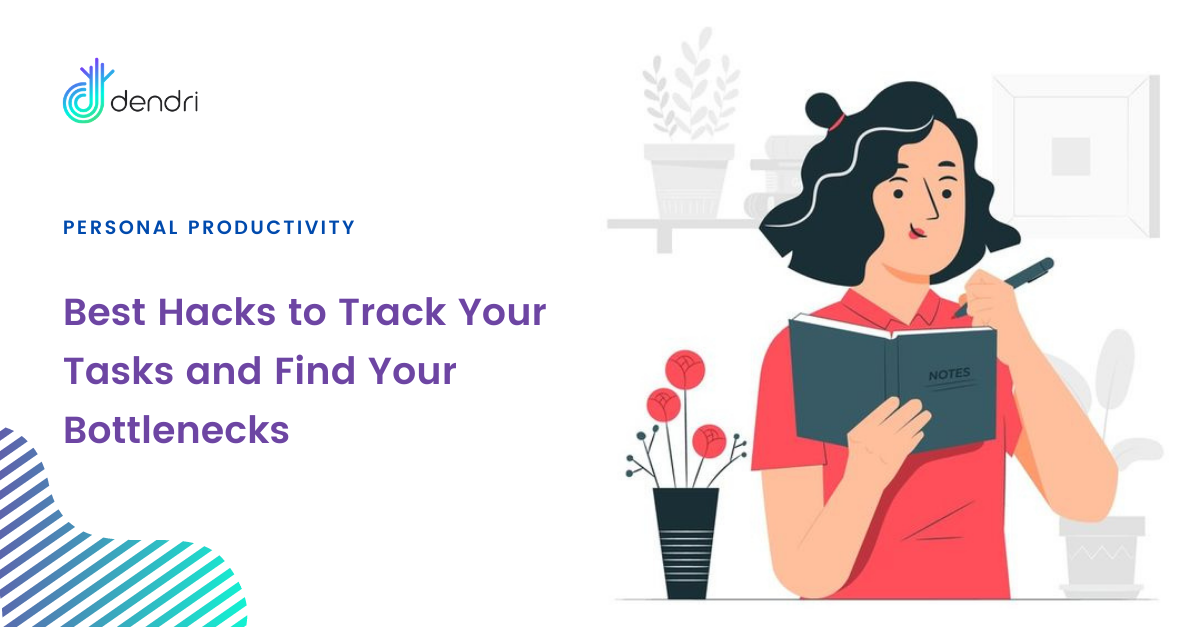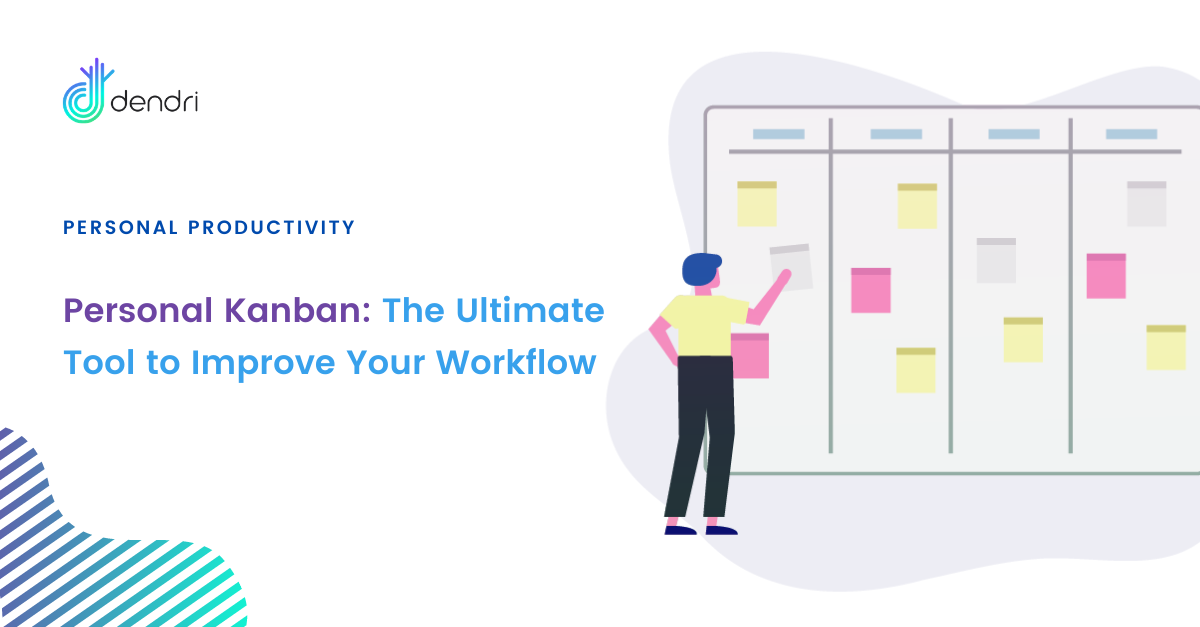
For the purposes of this introduction, I want you to view your productivity levels through the lens of a financial budget.
Imagine you set a goal to save $5,000 per year.
Then contemplate trying to accomplish that goal without tracking where your money is going. The chances are that you wouldn’t save a dime.
Why?
Because you’d have no concrete idea of where you were veering off course. Whereas merely tracking your spending habits would paint a complete picture of the practices you must correct.
This philosophy applies directly to streamlining your productivity and removing the bottlenecks that take your eyes off the prize. Whether you want to perform your job more efficiently throughout the day or start exercising more, you must track your behaviors.

Before I delve into productivity tracking and hacks, I want you to consider a critical statistic:
Tracking your time every day potentially decreases productivity leaks by 80%, meaning the evidence speaks for itself.
Tip #1: Use a Time-Tracking Tool for Your Tasks
Don’t merely track how many tasks you perform throughout the day. Instead, keep tabs on how much time you’re spending on a daily endeavor.
While you might think it’s possible to gauge this time without help, Inc.com reports that only 17% of people can do so accurately.
Conversely, using a tool such as Rescue Time informs you where you’re allocating your time, whether with social media, email, apps, and word processing. Leveraging such a tool will help you flag tasks taking too big a chunk out of your day.
Once you suss out where you’re leading yourself astray, it’s then possible to craft strategies to overcome those obstacles.
Tip #2: Create a Handwritten Task List
A handwritten task list might seem too straightforward to be useful. Yet, it’s proven to be highly valuable when improving productivity.
A 2015 American Economic Journal Study assessed an auto firm that began using a handwritten checklist. This small effort resulted in a 20% revenue increase for the firm. Plus, the list was a productivity booster because it monitored task completion and aided memory.
Interestingly, handwritten lists also function as a psychological hack, wherein your brain processes checking off a task as a reward. Thus, there’s a motivational factor in seeing yourself complete more work throughout the day.
With the powerful visual of the mounting work getting completed, it gives you a sense of momentum, keeping the proverbial ball rolling.
Tip #3 Start an Exercise Log
Generally, exercise tends to make you a more productive person. Sadly, if you’re balancing an otherwise busy schedule, it’s challenging to make time for such activities.
Exercising doesn’t have to be an all-consuming entity that takes you away from work. According to HealthlinkBC, beginning an exercise log will show that these regimes aren’t monstrously time-consuming. You’ll see space in your schedule where you can fit physical activity.
Start by incorporating exercise into your daily activities and routines. For instance, biking to work, using the stairs, taking walk breaks, and parking your car farther away from stores are significant first steps.
Tracking your exercise helps you conquer those initial obstacles and build from there.
Tip #4: Apply the Agile/Scrum Approach to Personal Productivity
The agile/scrum work philosophies are known throughout many industries. Usually, they’ve been applied to collaborative efforts in project management, but also work for individuals.
Namely, Agile Guru Mike Cohn uses scrum to stay productive, segmenting off his work into one-week sprints.
Cohn performs a weekly personal planning session. He chooses his most prioritized tasks over the upcoming week during this process. From there, he tracks everything with Things, an app developed by Cultured Code. With Dendri, you can use your task period journal or your personal Kanban on your Dashboard to organize your tasks and sync them with your google calendar.
Another proponent for scrum techniques is Dustin Wax. In an article, he explains how he applies scrum for individual productivity by adhering to the following philosophies:
- Dive head-first into a project without having a solution, then creatively solve the ensuing problems.
- Take a moment every day to reflect on your obstacles.
- Define short-term goals and work toward them.
- Break down big-picture objectives into smaller goals, then time-box them to create a sense of accomplishment.
Now that I’ve introduced tracking methods, let’s examine a couple of techniques to help tweak your behaviors:
Tip #5: Drown out the Noise
Emails, social media, text messages, and push notifications all seem to conspire against our productivity.
An article from Harvard Business Review delves into this topic. The author speaks to the Pavlov’s Dog effect these little “dings” inflict upon us. Once we hear there’s a message, we’re conditioned to check it out.
In a vacuum, getting back to work after a brief distraction doesn’t sound unreasonable. Unfortunately, the data suggests otherwise, with it taking 23 minutes to refocus on your given task.
Moreover, while a single task switch only costs 1/10th of a second, there’s the potential that it adds up to a 40% productivity loss.
Here are a few hacks and tips that will offset notifications and their productivity hindering properties:
- Turn off your desktop and smartphone notifications.
- Set your phone to Airplane mode at crucial points of the day.
- Download the Freedom app to block applications that aren’t essential to work at specific times.
- Leverage Google Chrome’s ‘compose email’ plugin. This handy tool only allows you to see the ‘compose’ window when writing emails. As such, you’re less likely to meander in your inbox.
- Segment specific windows during the day to respond to multiple emails.
Tip #6: Use White Noise to Your Advantage
This tip might seem counterintuitive given the previous section. But white noise and obnoxious notifications are two entirely different things.
As defined by Psychology Today, white noise is a random mixture of sound frequencies. The article goes onto explain that there have been fMRI brain-scan studies of young adults on this topic. Results showed increased activity in the “brain positive reinforcement pathways and in the auditory cortex.”
White noise blocks out the distractions discussed in the previous section and help you focus.
Furthermore, it’s said to improve cognitive functions and boost overall productivity.
With these tracking and productivity techniques, you’ll knock down the obstacles preventing you from performing up to your potential.
Related Posts

Personal Kanban: The Ultimate Tool to Improve Your Legal Workflow
The ultimate step-by-step guide to getting your work out of email and into a visual system that will save you time and increase your productivity. What is a Kanban? In the early 1940s, Toyota was…
- Mar 30
- 6 mins read


How To Unknowingly Sabotage Your Law Firm Employees
As an incoming attorney, you are subject to the random discovery of pre-set workflows and tech stacks your law office has already adopted. This unilateral focus on unified workflows can do you an injustice. Explore why today.
- Mar 17
- 4 mins read
Categories
Latest Post
Friday 7/2/21 updates
- July 2, 2021
- 3 mins read
Elevate project tracking with Dendri’s new Gantt Chart
- May 8, 2021
- 3 mins read
Personal Kanban: The Ultimate Tool to Improve Your Legal Workflow
- March 30, 2021
- 6 mins read
How To Unknowingly Sabotage Your Law Firm Employees
- March 17, 2021
- 4 mins read




